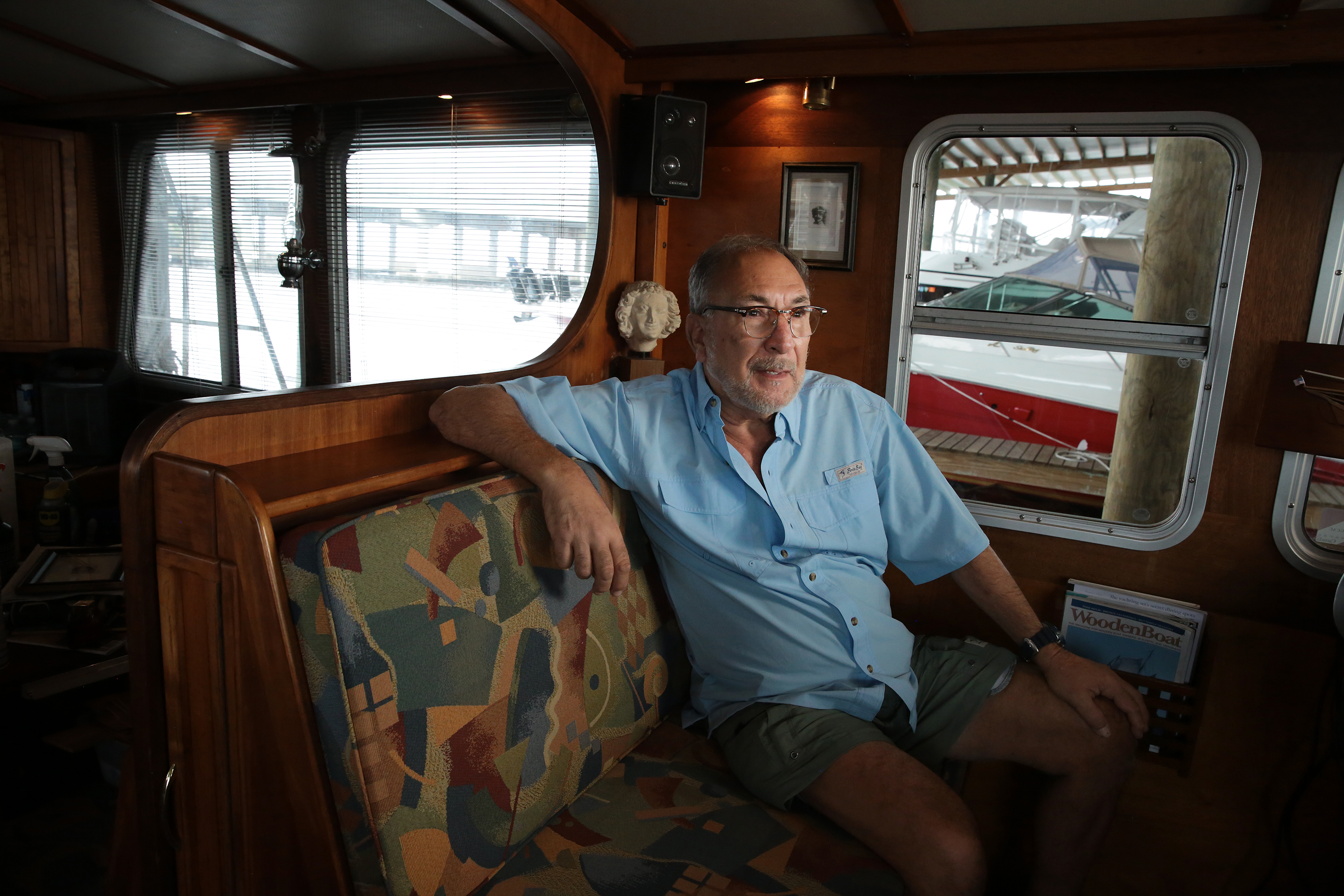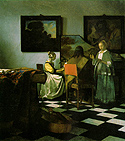
More than 30 years later, a
tantalizing clue in the Gardner Museum art heist surfaces
By Shelley Murphy Globe Staff,Updated
November 30, 2021, 6:52 a.m.
https://www.bostonglobe.com/2021/11/30/metro/more-than-30-years-later-tantalizing-clue-gardner-museum-art-heist-surfaces/?event=event25
Sometime after March 18, 1990,
Boston jeweler Paul Calantropo says he was shown a recently stolen eagle finial
from Napoleon’s Imperial Guard by a friend. It was one of 13 artworks recently
stolen in a robbery of Boston’s Isabella Stewart Gardner Museum.Bob Self/Bob
Self for the Boston Globe
On a
spring morning in 1990, Paul Calantropo was alone in his eighth-floor office at
the Jeweler’s Building in downtown Boston when he looked up at a security
camera and spotted a familiar figure walking down the hallway toward his door.
He buzzed him inside.
It was
Bobby Donati, a friend Calantropo had met decades earlier as a teenager in
Everett. Over the years, Calantropo had appraised diamonds, jewelry, and other
items Donati brought in, but said he was always uneasy about it because
he knew that Donati had been in and out of jail for robbery and hung out
with local mobsters.
As they
sat across from each other, Donati unwrapped a shiny finial in the shape of an
eagle, according to Calantropo. He placed the decorative piece, designed
for the top of a flagstaff, on a desk and asked how much it was worth.
This eagle finial was stolen from
the Isabella Stewart Gardner Museum, among other valuable pieces of artwork.Isabella
Stewart Gardner Museum
Calantropo
was stunned. He immediately recognized the gilded bronze object from
media reports as one of 13 pieces of artwork, including several Rembrandts,
that had been stolen about a month earlier from the Isabella Stewart Gardner Museum,
he told the Globe in an lengthy interview.
“Jesus, Bobby
why didn’t you steal the Mona Lisa?” Calantropo recalled asking him.
Donati
laughed as he lifted the finial and urged Calantropo to feel how heavy
it was, Calantropo said. He refused, unwilling to leave his fingerprints. The
artwork was worthless, he said. The whole world knew it was stolen.
Donati
wrapped it up and left. It was the last time Calantropo saw him. The following
year, Donati, 50, was brutally murdered. His killer has never been found.
Neither, of course, has the finial, swiped from atop a Napoleonic flag during
the brazen heist.
Three
decades later, the largest art theft in US history remains unsolved,
despite a $10 million reward. No one has been charged and none of the artwork
has been recovered.
Now 70,
Calantropo is speaking publicly for the first time about his meeting with
Donati, whose name first surfaced as a potential suspect in the heist in the
late 1990s. Calantropo, a jeweler and fine arts appraiser for more than 40
years before he retired to Florida, said he has no doubt the artwork
Donati showed him had been stolen from the museum. He said he kept quiet
about it for years because he feared for his safety. Five years ago, at the
urging of a friend, he said he met with an FBI agent and the museum’s security
director and told them about Donati’s visit, along with a detailed description
of the finial.
The
reported sighting of the stolen finial, so soon after the theft, offers a
tantalizing clue in the enduring mystery, bolstering other accounts linking
Donati to the crime. Over the past year, Calantropo has been working behind the
scenes with an unlikely assortment of sleuths — including a retired law
enforcement official, two former convicts and retired Boston Globe
investigative reporter Stephen Kurkjian — in hopes of finding the artwork.
In April,
the group signed an agreement with the Gardner Museum, which stipulates that
the members will share equally in the reward if they provide information that
leads to the return of the artwork in restorable condition, according to a copy
of the document Kurkjian shared with the Globe, along with a detailed
account of his work with the group.
Members
of the group said they gave the FBI several addresses that Donati may have
frequented, including a house in Everett where his former wife and sister had
lived. In August, the FBI conducted a thorough search there but
turned up nothing, according to Michael Kradolfer, a longtime
investigator for the Massachusetts Department of Correction who was assigned to
the FBI’s organized crime unit before retiring several years ago.
“I was
pretty crestfallen,” said Calantropo, a member of the group who is convinced
that Donati hid the artwork somewhere before he died. “I believe the secret of
the location died with Bobby.”
FBI spokeswoman
Kristen Setera declined to comment on Calantropo’s account or whether Donati is
believed to have been involved in the heist, citing the ongoing investigation.
She said the FBI is “focused on recovering the art and returning it to its
rightful place at the museum,” and “we’d be remiss if we didn’t take this
opportunity to remind everyone that the museum is still offering a $10 million
reward for information leading to the return of the artwork in good condition.”
A
spokesman for the Gardner Museum declined to comment.
But
Kradolfer, who arranged the 2016 meeting between Calantropo and the FBI agent
who was spearheading the Gardner theft investigation, said the FBI told him
that Calantropo’s recollection of the physical characteristics of the
finial was consistent with the one stolen from the museum, lending credence to
his account.
“I’m
thinking it’s huge,” Kradolfer said. “I knew if it was true it pretty much
identifies Donati as one of the thieves and that he had access to the paintings.”
In the
early morning hours of March 18, 1990, two men dressed like police officers
talked their way into the museum in the Fenway, tied up two young guards, and
stole 13 pieces, including three Rembrandts, among them his only seascape, “The
Storm on the Sea of Galilee’; Vermeer’s “The Concert”; works by Flinck,
Manet, and Degas; an ancient Chinese vase, and the finial. The value of the
artwork is now estimated at more than $500 million.
There
have since been countless theories, a wide array of suspects, and voluminous
reports throughout the world of sightings of the masterworks, but few have been
deemed credible by authorities.
In 2013,
the FBI announced it was confident it had identified the thieves — local
criminals who have since died — but declined to name them. Authorities said
they believed some of the artwork changed hands through organized crime circles
while moving from Boston to Connecticut to Philadelphia, where the trail went
cold. A witness deemed credible by the FBI claims to have seen one of the
paintings, “The Storm,” when someone tried to sell it in Philadelphia around
2003, the FBI has said. In 2015, the museum offered a $100,000 reward for
information leading directly to the finial, the least valuable item stolen.
The FBI
has never publicly identified Donati as a suspect. But notorious art
thief Myles Connor wrote in his 2011 biography that he had cased the Gardner
museum with Donati years before the theft. Connor also said a longtime friend,
David Houghton, visited him in prison shortly after the robbery and told him Donati
was one of the thieves and they planned to leverage the artwork to win Connor’s
release. But Houghton died of heart disease in 1991.
In his
2015 book, “Master Thieves,” Kurkjian wrote that former New England Mafia capo
Vincent Ferrara claimed that in 1990 Donati confessed to him that he robbed the
museum, buried the artwork, and planned to use it to try to broker Ferrara’s
release from prison.
But in
September 1991, Donati was attacked outside his Revere home and his body was
found several days later in the trunk of his Cadillac, parked a mile away. He
had been stabbed repeatedly and his throat was slashed. At the time, law
enforcement officials speculated that he was targeted because of his close ties
to Ferrara, who was part of a renegade faction vying for control of the New
England Mafia. Donati’s criminal record dated to the 1950s and included
convictions for armed robbery, arson, bond theft and possession of counterfeit
bills. He was under investigation for drug trafficking at the time of his
slaying, according to authorities.
Kurkjian
said he traveled to Florida to meet Calantropo last year after learning about
his claim that Donati asked him to appraise the stolen finial and found it to
be “the most authoritative account that I had heard of someone seeing any of
the stolen pieces after the theft.”
Kurkjian
also shared a 2016 letter he obtained from a federal inmate that showed
investigators were focusing intensely on Donati in their hunt for the
paintings. In the letter, Anthony Amore, the Gardner museum’s security
director, asked whether the inmate could provide any information about Donati
and another potential suspect who had died.
Amore
wrote that he had reason to believe Donati “was involved in the theft and
possession of our paintings, and my reasons extend far beyond what had been
reported in various media reports and books.”
Robert
Fisher, a former assistant US attorney who oversaw the Gardner investigation
from 2010 to 2016, said Donati was investigated as a potential suspect before
Calantropo came forward, and that he personally participated in an FBI search
of the Revere home where Donati had been living at the time of his murder.
He said
the theory that Donati hid the artwork before he was murdered would explain why
it has never been discovered. But he said he remained unconvinced that
Calantropo’s account was proof of Donati’s involvement.
“Until
these things are found, everyone’s thought process on this is still a theory,”
Fisher said. “I think I need more than that story to make Donati the prime
suspect. I would need corroboration that the story is even accurate, that this
guy did, in fact, see the finial.”
A former
convict who is among the five people who signed the agreement with the Gardner
museum said he believes Calantropo’s account is credible. He said Calantropo
first told him about it 20 years ago and it took him years to convince
Calantropo to talk to the FBI and assist in the effort to recover the
paintings.
“Donati
trusted nobody,” said the man, who spoke on the condition he not be identified.
“I really believe that Donati buried them and I believe one day someone is
going to open up a wall and find them.”
Art Hostage Comments:
Comments to follow.............


